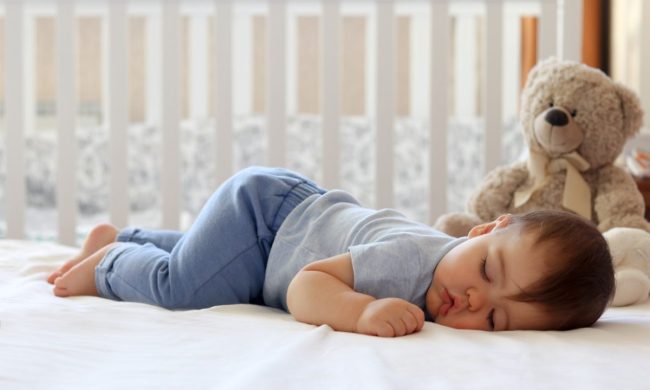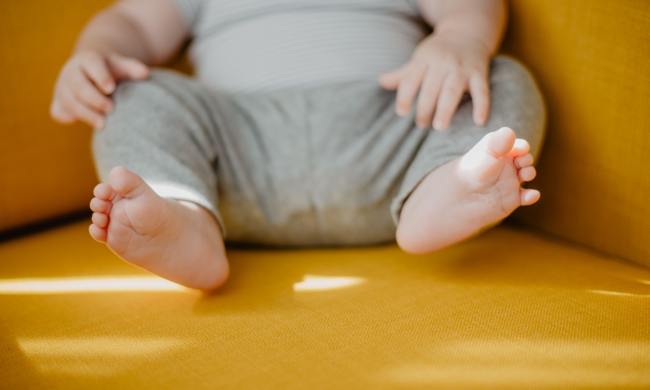It’s always a bittersweet thing to watch your child grow up. We’re proud and a little sad that they can’t stay small forever. One big transition comes when children outgrow their cribs and switch to their very first big-kid beds.
Choosing the right bed may seem simple, but when you’re faced with choosing something your child will spend a ton of time in, it can be daunting. Luckily, we have a great list of things to consider when selecting the perfect toddler bed. Let’s take a look.
Convenience or longevity?
Your first fundamental choice is the size of your mattress. Right now, your child has a crib mattress that can transition straight to a toddler bed. If you and your child already love the mattress you choose for the crib, this could be a great way to get more use out of it.
Use a crib mattress with a toddler bed if:
- You chose a high-end crib mattress and want more use.
- The mattress is still in good condition and supportive.
- Your child is on the younger side (2 and a half or less).
- You don’t have another baby who will need the mattress right away.

Choosing a regular-sized mattress can also be a great choice under the right circumstances. New twin-sized mattresses are supportive and can grow with your child. If you have a baby on the way that will be using your current crib mattress, or you’d like something with longevity, a regular mattress is a better idea.
Use a standard mattress if:
- You need to use your crib mattress for a child on the way.
- Longevity is the most important thing about your decision.
- Your child is on the older end (3 or older).
- You’d like to be able to use standard-sized sheets.
Consider safety and security
Regardless of whether you choose a toddler or standard-sized bed, there are security considerations. Toddler beds are often easier to childproof than standard beds, but both have pros and cons.
A toddler bed must fit your crib mattress exactly, or it poses an entrapment hazard. However, these beds are low to the ground and come with rails to prevent small children from rolling off. Most toddler beds have a weight limit of around 50 pounds, so you’ll have to consider your child’s growth.
A standard bed can support a much more considerable amount of weight, but you’ll have to put some precautions in place. Many parents choose simple railings that attach to the sides while a child is getting used to a big bed. If the bed is too tall, it could be difficult for a child to get in and out of bed easily, but some can come with stairs.
The overall design of your child’s bed should be rounded corners and no protruding screws. If there are slats, be sure that your child cannot get their legs or head stuck between the slats. The best choices are smooth finishes with curves and no gaps.
Think about the materials
Mattresses can be a significant source of allergies for both children and adults. Cheap mattresses sometimes produce fumes and can gather microbes and skin cells — common sources of allergies.
Organic materials can help reduce the number of allergic reactions and help children sleep better at night. These materials can be a bigger investment, but they often last longer than cheaper, synthetic materials.
Look for certified organic materials through organizations like CertiPur-US and OEKO-TEX. Take a look at the manufacturer’s label and consider materials such as organic cotton covers or latex interiors, a naturally antibacterial material.

As far as the bed goes, give priority to natural materials like real wood. Composite materials and paints can also cause toxic fumes and potential allergic reactions.
Consider the design
Toddlers often need help learning how to go to sleep and stay there. While a race-car bed isn’t a necessity, it can be a way to get your riled up toddler interested in getting into bed. Colors could be a great way to entice your child to go to their bed and stay there.
You should also look at the measurements of the mattress you have. Standard sizes are more convenient for bedding and could prevent you from having to special-order sheets.
You may also want to stick with a simple platform design so that you don’t have to use a box spring. You cut down on the materials you need, and it may also reduce the height of the bed to prevent falls and make it easier for your child to get on and off.
Choosing a mattress type
If you’re investing in a new mattress, you might consider the type of mattress available. Right now, your child may not be heavy enough to be concerned about support, but longevity is a consideration.
- Innerspring mattresses – innerspring mattresses are often the most budget choice. They’re accessible, and younger children don’t have to worry about pressure points yet.
- Pocket coils – Pocket coils aren’t interlinked the way standard innerspring coils are. They’re a bit more expensive, but they help reduce motion and often last longer than conventional innersprings.
- Memory foam – Memory foam mattresses reduce motion and provide comprehensive support. However, they can be a more significant investment, and lightweight children may not need that type of relief yet.
Your best chance for the right bed

As your toddler grows up, a quality bed can be one way to provide support and get them started on a lifetime of good sleep habits. You can provide your child with the right tools for excellent sleep and maybe even get them excited about going to bed each night.
This list offers our best tips for choosing the right bed and mattress, and now, all that’s left is to snuggle your child in with a bedtime story.


